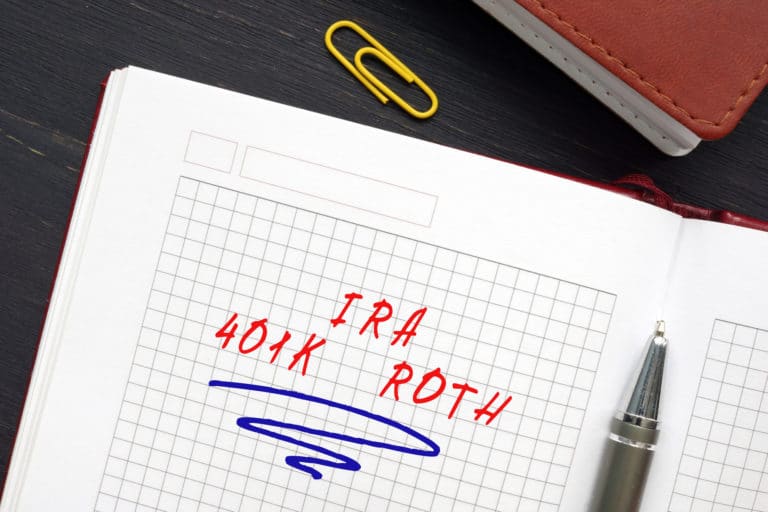If you are looking to plan for your retirement, then you have probably been researching all of the different account options you can utilize to put away money for your retirement years. An IRA (individual retirement account) should be near the top of this list These accounts are either tax-deferred or have tax-free growth, depending on the type of IRA you choose.
Figuring out the best way to prepare for your retirement can be confusing. Depending on your income, marital status, and age, different options may be best suited for you. If you are interested in opening an IRA, it is important to know that there are several different types of IRAs, each with its strengths and limitations.
Traditional IRA
A traditional IRA allows your investments to grow tax-deferred until you begin to make withdrawals from the account. When you retire, the withdrawals will be taxed at whatever your current income tax rate is.
The amount you can contribute each year depends on your age. If you are younger than 50, then you can contribute $6,000 a year. If you are older than 50, you can contribute up to $7,000 a year. When you turn 72, you are required to meet the minimum withdrawal amount each year by pulling funds from the account. However, you can start withdrawing funds when you are 59-and-a-half years old. If you are building a house, adopting a child, or you are a person with a disability, you can withdraw some funds before you are 59 without penalty.
Your contributions to your traditional IRA are most likely tax-deductible. However, if you have additional retirement accounts (like a 401(k)), then this might affect the amount you can deduct.
Roth IRA
For a Roth IRA, you pay taxes on the income you put into your account, but the withdrawals you make during retirement are tax-free. This is a good choice for a retirement account if you think your tax rate is lower now than it will be when you decide to retire. You can contribute up to $6,000 a year if you are under 50 years old, and $7,000 a year if you are 50 and older.
Unlike a traditional IRA or a 401(k), the Roth IRA does not have a required minimum distribution when you reach a certain age. Depending on where you open your Roth IRA, the investment options available to you will be different. Depending on the bank or brokerage firm you choose, your contributions may have a wide variety of investment options or they may be limited.
You are eligible to make the full yearly contribution to your Roth IRA if you make less than $129,000 a year (single filer) or less than $204,000 (married and filing jointly). Of course, if you surpass this amount, you can always keep a majority of your finances in a Traditional IRA, and use a Roth IRA for any rollover finances.
Different Forms of Roth and Traditional IRAs
If you’re having trouble deciding between either IRA option, you’re not alone. There are also plenty of different types that Roth and Traditional IRAs can form as, including:
SIMPLE IRA
A SIMPLE IRA is an option that is often used by small businesses. “SIMPLE” stands for “Savings Incentive Match Plan for Employees.” Employers pick between a Roth and Traditional IRA and can make a matching contribution of up to 3% of their employee’s income. Employees can contribute up to $14,000 annually.
One of the biggest benefits of this type of account is in its name: it is simple. The paperwork necessary to establish the account is easy to finish and maintenance costs for this type of account are very low.
SEP IRA
A SEP IRA is also known as a Simplified Employee Pension, and again, can take the form of either a Roth or a Traditional IRA. Employers can make contributions (that are tax-deductible) into their employees’ SEP accounts. This type of account is often seen as an alternative to a 401(k).
One of the benefits of this type of retirement account is that it allows for larger yearly contributions. The trustee of the IRA will present eligible investment options, but the owner of the account will be in charge of making specific investment decisions.
Self-Directed IRA
The self-directed IRA is a great option for anyone who wants to work with more alternative forms of investment that may be limited or prohibited with other types of individual retirement accounts. This type of IRA is directly handled by you (the account holder), and is best for investors who are knowledgeable about what investments they are interested in trying out.
A self-directed IRA can be formed as a traditional IRA or a Roth IRA. The account holder can choose whichever structure they prefer. A self-directed IRA allows you to hold alternative investments such as real estate, precious metals, limited partnerships, and more. To open this type of account, you will need to find an IRA custodian who is qualified and who works with the types of alternative investments you are interested in making.
Gold IRA
A Gold Individual Retirement Account allows you to make investments in physical gold. These investments help to protect you against inflation, defer your tax payments, and skip capital gains taxes.
Investing in gold as a part of your retirement plan has many benefits. Gold is a global currency that is accepted around the world. It is known for being a stable asset. Gold is in limited supply and is increasingly being used in technology and healthcare.
Of course, even though gold is a physical asset, it can also take the form of a Traditional and a Roth IRA. By starting an account, you can provide security for your investments through diversification. You are also able to participate in a kind of retirement plan that some people don’t even know about!
Which Is Best for You?
Every retiree is different, so there isn’t one answer about which kind of individual retirement account is the best. You must identify your goals and priorities when you are researching your IRA options.
By educating yourself and making the best investments now, you can grow your wealth over time instead of putting your funds in a savings account. No matter your age, taking the time to plan for retirement now can have life-changing benefits as you age.







